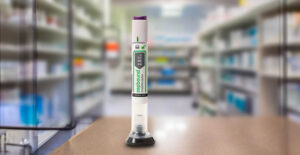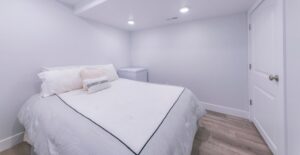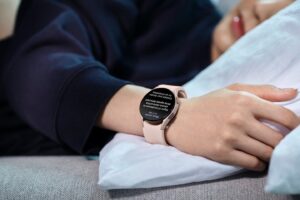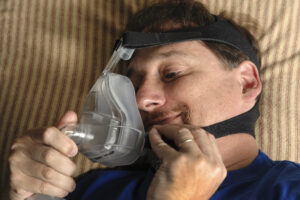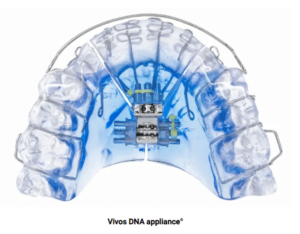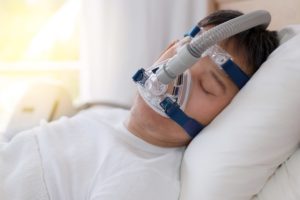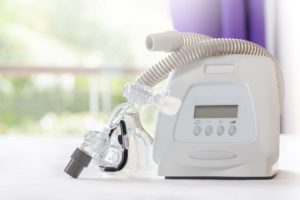Researchers Develop New Seal-Less CPAP Mask
‘VortexPAP’ Device Uses Principles From Aerospace Engineering
Table of Contents
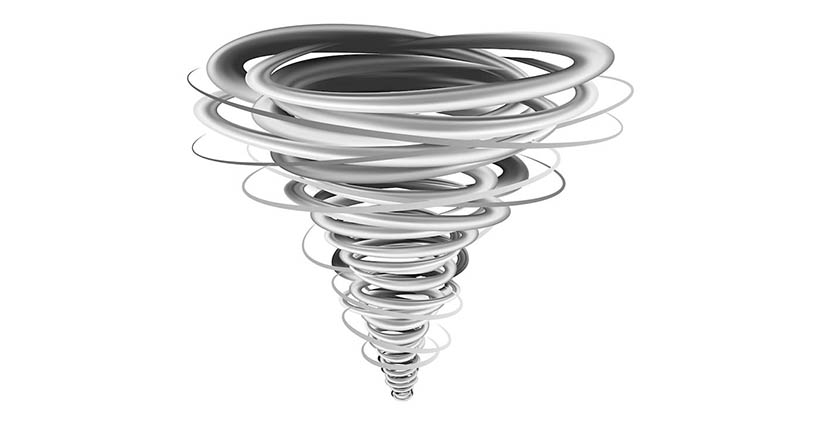
Researchers at the University of Cincinnati are developing a new, more comfortable form of CPAP technology to treat obstructive sleep apnea. Called VortexPAP due its use of whirling, circular airflow, this innovation may be a welcome breakthrough for the many people who tried continuous positive airway pressure therapy but found it too uncomfortable to continue.
Obstructive sleep apnea, or OSA, is a condition in which soft tissues in the upper airway slacken during sleep, causing repeated episodes of stopped or shallow breathing. This sleep disorder is estimated to affect up to 22% of adults in the U.S. Untreated sleep apnea contributes to daytime sleepiness and can have long-term effects on cardiovascular health.
The gold standard treatment for OSA is a CPAP machine, which works by blowing a continuous stream of pressurized air into the sleeper’s airway to prevent it from closing. Unfortunately, many people find it difficult to tolerate CPAP therapy.
Experts estimate that nearly 50% of people prescribed CPAP therapy do not use it on a regular basis. Not only does this reduce the effectiveness of treatment, but failure to use the device for at least four hours per night can also void a person’s insurance coverage.
Breaking the Seal Requirement
Part of the reason some people have trouble adjusting to CPAP therapy is because it requires a snug-fitting mask, which can feel claustrophobic. A poorly fitting CPAP mask can also cause pressure sores or allow unwanted air leaks, leading to an increase in sleep apnea symptoms.
While different types of CPAP masks may help mitigate some of these side effects, all of the existing designs — including less bulky nasal masks and nasal pillow masks — require an airtight seal. That’s why the researchers from the University of Cincinnati decided to team up with a sleep medicine specialist to approach the problem from a different angle.
Using principles from aerospace engineering, the team designed a device and mask based on vortical airflow. Whereas traditional CPAP therapy delivers a steady stream of air, the VortexPAP is designed to deliver air in a spiral shape. This design better directs the airflow toward the nostrils and allows the mask to keep the airway open without requiring such a tight fit.
A ‘Game-Changing Innovation’
The new device has a low-profile interface with thin tubes that fit inside each nostril. Crucially, this design doesn’t need to form a seal against the user’s face, and the vortex airflow may also help protect against excessive air swallowing. In preliminary studies, participants reported that this mask is more comfortable than a standard CPAP mask.
Liran Oren, Ph.D., part of the team behind the VortexPAP device, says, “This game-changing innovation will make CPAP therapy more comfortable, better tolerated and may increase patient compliance.”
It should be noted that the mask isn’t the only uncomfortable part of CPAP therapy. Discomfort from the pressurized airflow and irritated nasal passages have also been cited as reasons why people may stop using their CPAP machine. However, if the VortexPAP technology reaches the commercial stage, it has the potential to deliver effective sleep apnea therapy at lower, more comfortable pressure levels.
Got a hot tip? Pitch us your story idea, share your expertise with SleepFoundation.org, or let us know about your sleep experiences right here.
References
5 Sources
-
Ricks, C. (2024, April 17). UC researchers develop new CPAP device. UC News.
https://www.uc.edu/news/articles/2024/04/university-of-cincinnati-researchers-develop-a-new-cpap-device-to-assist-indivials-with-obstructive-sleep-apnea.html -
Weaver, T. E. (2024, February 28). Assessing and managing nonadherence with continuous positive airway pressure (CPAP) for adults with obstructive sleep apnea. In N. Collop (Ed.). UpToDate., Retrieved May 1, 2024, from
https://www.uptodate.com/contents/assessing-and-managing-nonadherence-with-continuous-positive-airway-pressure-cpap-for-adults-with-obstructive-sleep-apnea -
Kline, L. R. (2023, October 5). Clinical presentation and diagnosis of obstructive sleep apnea in adults. In N. Collop (Ed.). UpToDate., Retrieved May 1, 2024, from
https://www.uptodate.com/contents/clinical-presentation-and-diagnosis-of-obstructive-sleep-apnea-in-adults -
Malhotra, A., & Kundel, V. (2024, March 26). Obstructive sleep apnea: Overview of management in adults. In N. Collop (Ed.). UpToDate., Retrieved May 1, 2024, from
https://www.uptodate.com/contents/obstructive-sleep-apnea-overview-of-management-in-adults -
NIH Seed. (n.d.). The application of vortex airflow to continuous positive airway pressure CPAP therapy. National Institutes of Health: U.S. Department of Health and Human Services., Retrieved May 1, 2024, from
https://seed.nih.gov/portfolio/nih-funded-projects/poc-funded-tech/application-vortex-airflow-continuous-positive-airway






